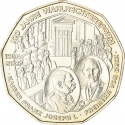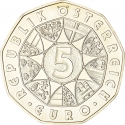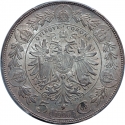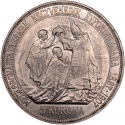You are about to finish your registration. Please check your mailbox (including spam folder). There should be a letter with a confirmation link. Check setting to make sure that your e-mail address is correct.
Send letter againDescription
Franz Joseph I or Francis Joseph I (1830-1916) was Emperor of Austria, King of Hungary, Croatia and Bohemia. He concluded the the The Austro-Hungarian Compromise of 1867, which granted greater autonomy to Hungary, hence transforming the Austrian Empire into the Austro-Hungarian Empire under his dual monarchy. His domains were then ruled peacefully for the next 45 years, although Franz Joseph personally suffered the tragedies of the execution of his brother, Maximilian in 1867, the suicide of his son, Crown Prince Rudolf in 1889, and the assassination of his wife, Empress Elisabeth in 1898. On 28 June 1914, the assassination of the heir-presumptive to the Austro-Hungarian throne, his nephew Archduke Franz Ferdinand, at the hands of Gavrilo Princip, a Serbian nationalist, resulted in Austria-Hungary's declaration of war against the Kingdom of Serbia, which was Russia's ally. This activated a system of alliances which resulted in World War I.
Franz Joseph died on 21 November 1916, after ruling his domains for almost 68 years. He was the longest-reigning emperor of Austria.
Obverse

|
Bust of Franz Joseph (right), below engraver's signature: ST-SCHWARTZ (Stefan Schwartz). FRANC·JOS·I·D·G·IMP·AVSTR·REX BOH·GAL·ILL·ETC·ET AP·REX HVNG· |
|---|---|
Reverse

|
The double-headed eagle with marshaled arms of Habsburg, Babenberg and Lorraine displayed on the Escutcheon, Order of the Golden Fleece and Imperial Crown, value divided by the tail feathers, date below. II CORONÆ MDCCCCXIII |
| Edge |
'With United Forces' is a personal motto of Franz Joseph I VIRIBVS VNITIS |
Related coins
Eurostar - European Realisation









